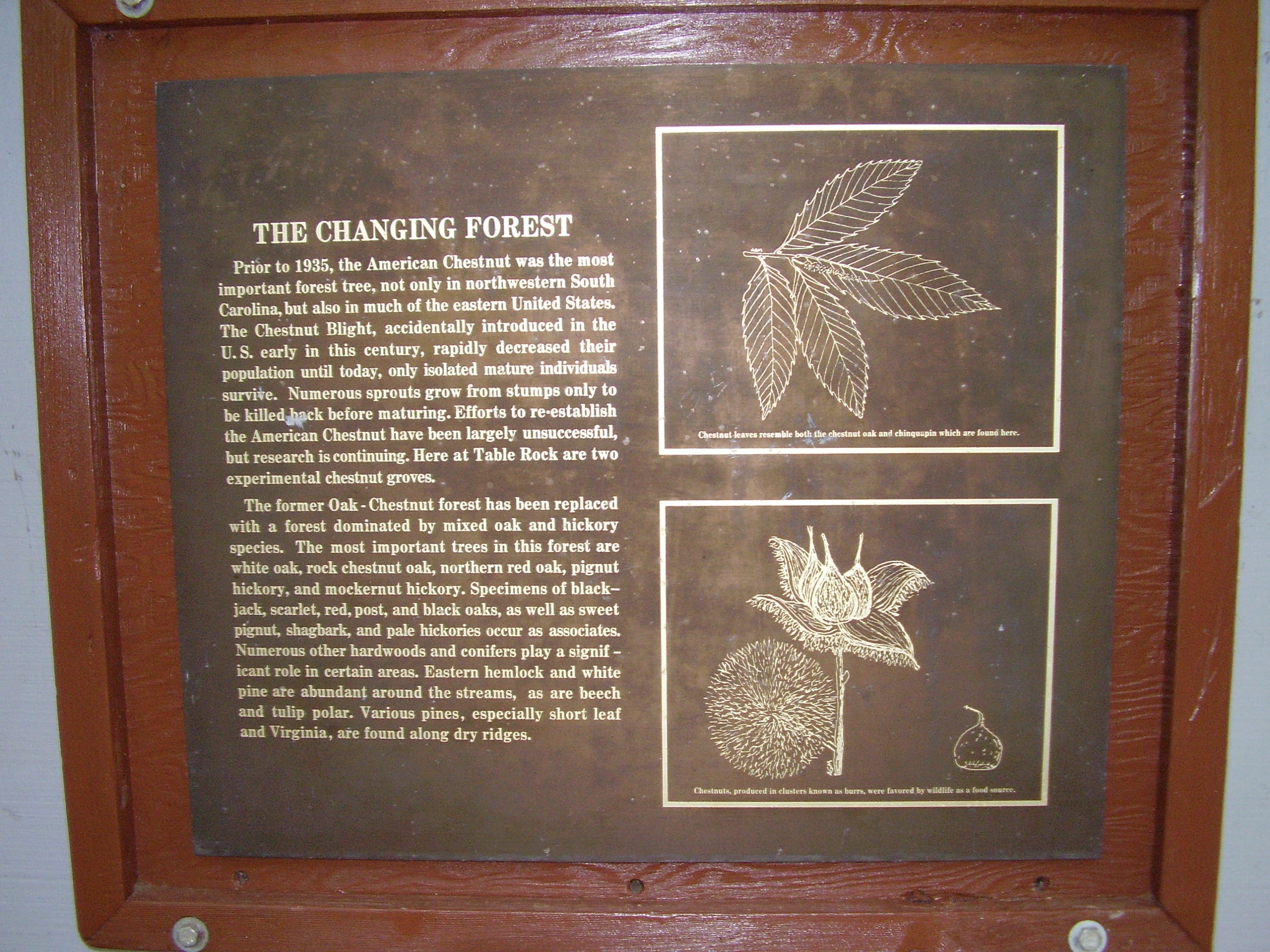Photograph as originally submitted to
this page in the Historical Marker Database
www.HMdb.org.
Click on photo to resize in browser. Scroll down to see metadata.
Photographer: Stanley and Terrie Howard
Taken: July 19, 2009
Caption:
The Changing Forest | Additional Description: Prior to 1935, the American Chestnut was the most important forest tree, not only in northwestern South Carolina, but also in much of the eastern United States. The Chestnut Blight, accidentally introduced in the U.S. early in this century, rapidly decreased their population until today, only isolated mature individuals survive. Numerous sprouts grow from stumps only to be killed back before maturing. Efforts to re-establish the American Chestnut have been largely unsuccessful, but research is continuing. Here at Table Rock are two experimental chestnut groves.
The former Oak-Chestnut forest has been replaced with a forest dominated by mixed oak and hickory species. The most important trees in this forest are white oak, rock chestnut oak, northern red oak, pignut hickory, and mockernut hickory. Specimens of blackjack, scarlet, red, post, and black oaks, as well as sweet pignut, shagbark, and pale hickories occur as associates. Numerous other hardwoods and conifers play a significant role in certain areas. Eastern hemlock and white pine ate abundant around the streams, as are beech and tulip polar. Various pines, especially short leaf and Virginia, are found along dry ridges.
Submitted: July 24, 2009, by Stanley and Terrie Howard of Greer, South Carolina.
Database Locator Identification Number: p71595
File Size: 1.080 Megabytes
To see the metadata that may be embedded in this photo, sign in and then return to this page.
